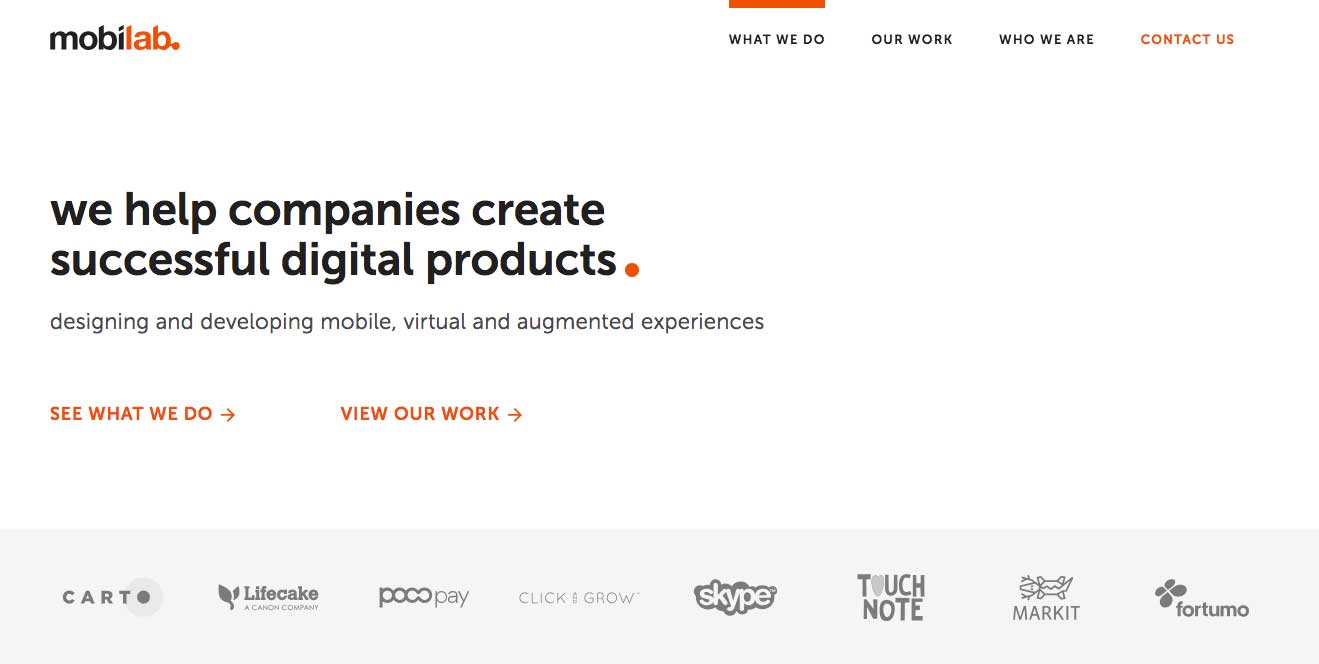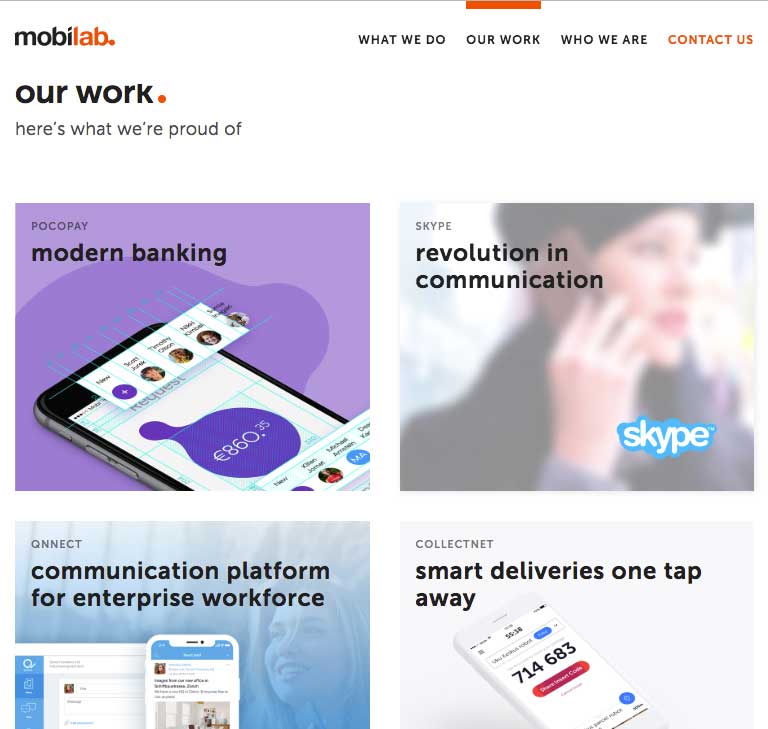How We Overcame Failure to Bootstrap a Company Generating Millions
Hello! What's your background, and what are you working on?
I'm Veiko Raime, founder and CEO of Mobi Lab. I have always been good at math and physics, but when I chose what to study at University, I ended up studying economics. I soon realised that this was way too generic for me and I made an extra effort to learn more about information technologies.
I can say that the combination of IT and business studies have given me an excellent background to build my own business in the field I love.
Mobi Lab is an agency that builds digital products. What we consider unique is the strong combination of design, technology, and business management.
Today we are a team of about 40 people, with revenues up to 200k EUR. We have built our own spin-offs and we are working with some very large international companies.

What motivated you to get started with Mobi Lab?
Today it seems to be cool to be a founder of a startup. We never considered ourselves a startup. Our story started with some ideas that we brought to life with long nights of free work and litres of energy drinks. Very early on it also wasn't about the money because the day we could get something out the company seemed so far off.
My job initially was to build up the financial team and get invoices out and salaries paid. That wasn't so hard as I had a good background for this. The challenge was using business intelligence and good prediction skills for liquidity — and figure out on a daily basis if we could afford things.
The second job was to hire and build the engineering team. It took me some time to get the business and technology investments aligned. When it came to money, I did not have it. I had bought my computer with a student loan, and our families could not make any investments or help us with savings.
What went into building the initial product?
We were bootstrapping fairly quickly. We always sold things first and then did whatever it took to deliver. Of course, it included many sleepless nights and a few failed projects. Failures were important lessons.
For example, because we did not have a good test environment, we sent out text messages to thousands of clients in the middle of the night. It was a good PR lesson.
We learned technologies on the fly but as I was developing software myself, I become quite an expert in Java technologies. We used J2EE servers, J2ME clients for mobile, etc. Today I actually cannot use this skill too much but I also learned a lot about SQL and databases. This has given me the freedom to produce BI data for myself for the decisions I make as a CEO.
How have you attracted users and grown Mobi Lab?
There are some simple rules we follow when looking at the growth:
- First, we always keep a technology focus and don't run after every new cool startup tech that promises to do the work for you.
- We do outsource what we don't have in-house and keep the partners close by we trust.
- We always grow value before quantity: we started as a development company and most of the team was composed of software developers.
Today we have one of the best UX and UI design teams. We have in-house product management and business consulting. This way, we don't create software – we solve problems and make products.

What's your business model, and how have you grown your revenue?
We're a kind of laboratory of different enterprises, so our business models are also very different. As an agency, we have two main business models:
- Pay for value
- Pay for complexity
For product management consultancy, UX research, or simple scope products, we charge for the value. This either means fixed budget or KPI-related invoicing. The important thing here is to be honest about what you do and how much value your client will get.
Let me give you a simple example. A small restaurant might come and ask for a custom mobile application with a booking system. Maybe the owner of the restaurant can afford it but we know that it would never bring as many additional customers to a restaurant as the design and development would cost. So, in this case, we would propose something that will bring the customers without investing the value of a car to a software.
The pay for complexity model is probably used by most agencies. In most cases, this means a daily or hourly rate. We avoid renting people out and usually manage the process of design and engineering. I believe that renting your team out per person is risky not just for you but also for your client. You have to perform as a team, adding relevant roles when needed. So we might charge a bit more than average, but we only charge effective hours worked on the product.
This means that our gross profit goals are relatively high. Today we target 40% average but in addition to that, indirect costs take at least half of the rest. This is because we invest a lot in team development that is not directly associated with the specific project. That is a long-term investment that helps us to keep the rates high and service of high quality.
What are your goals for the future?
We see a lot of value now created in design. We consider engineering part of the design process and promote ourselves as the design company. Our goal is to be a leading design agency for mobile experiences in Europe. Of course, this means revenue growth goals but also a lot more content marketing and talking about how and what we do.
I've studied a lot of design myself, and taken courses in university. It is not that I will ever be a good designer but I want to be aware of the design process.
What are the biggest challenges you've faced and obstacles you've overcome? If you had to start over, what would you do differently?
This is a controversial one. I think the success as made us hold back some potential we have had. Once you have your first big clients and good revenues we stop looking at the numbers, KPIs frequently enough. Your decisions are based more on emotions.
Luckily we had 1-2 big clients leaving us after the decision to have the product development in-house. So we had to go back to metrics, see what our customer acquisition costs are, what are the gross margins and hiring costs.
Have you found anything particularly helpful or advantageous?
I'm a person who does many things. I run a bar, own a coffee shop, and have multiple hobbies outside of work. That means the most limited resource is time. I think every entrepreneur should be able to get things done and make a difference where their valuable time is spent.
Besides time management, make sure you know how to use Excel or Numbers or another tool to calculate how are you really doing with the business. Money in the bank account doesn't mean that you can live over a low season or pay vacation money to your employees.
What's your advice for indie hackers who are just starting out?
Explore things and try out as much as you can yourself.
If you are more than one, be inspiring. Also, don't be a solo player.
Where can we go to learn more?
There's information about what we do on our website.
We host a Design Fridays meet-up and you can keep track of those on our Facebook page.

My favourite place to share is our Behance portfolio. It does not represent the projects with strong NDAs, but it has a proper case study format to learn from.
And finally, from time to time, we share our experiences on Medium.
I'm consulting with many startups and incubators in product management and product design. If you have challenges in those areas, feel free to contact me.

Thank you Veikor for sharing your experiences.....looking forward to starting my own little biotech company and am eager to learn from other founders.
Good luck with your own business!
Hi. I like this article so much. May I ask this: looking at the pictures in this podcast, does it mean that your company brings together individual useful services such as mobile banking, Skype etc into one platform?
What products have you built?
Latest one, spin-off from Mobi Lab, came from our own in-house CI tool: https://nevercode.io A good example is also https://fortumo.com – carrier based billing platform.
so, 200k divided by 40 people = 5k a month per person? ignoring overheads.
Roughly yes. Most of the team is in Estonia – changing very fast in terms of talent costs.
How did you get customers?
In very early days, we were lucky to have co-founders with strong sales skills. Today, I've learned to sell myself and have hired the team.
When it comes to bootstrapping – founder is always the best sales person. So even if you an engineer, study the basics of sales process. It might be hard to have enough leads in the beginning. But you know your service the best and will be always the best closer.